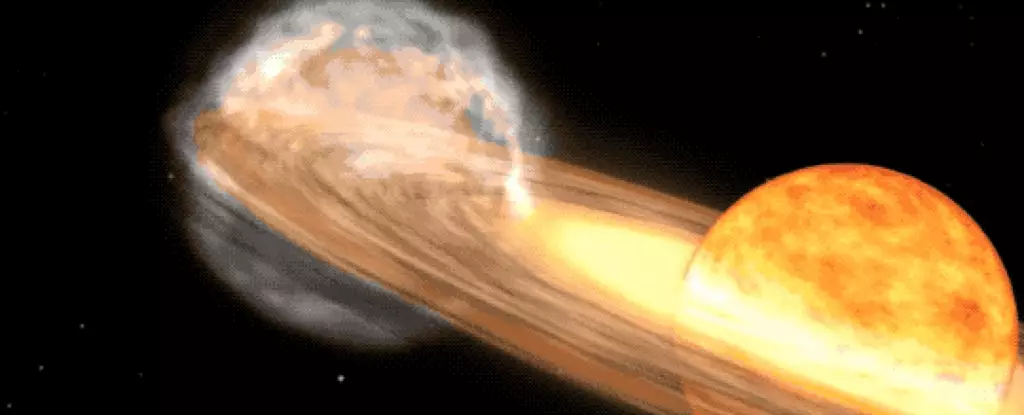In the vast expanse of the universe, there is a binary star system located 3,000 light years from Earth in the constellation Corona Borealis, also known as the “northern crown.” This system is generally too dim to be seen with the naked eye, but every 80 years or so, something extraordinary happens. The two stars in this binary system engage in a deadly dance that culminates in a massive explosion, creating a breathtaking light show in the night sky. This phenomenon, known as a recurrent nova, will be visible to amateur astronomers sometime between now and September.
The first recorded observation of this event dates back to 1866, when Irish polymath John Birmingham first discovered it. Since then, the explosion has reappeared in 1946, and now it is set to occur once again after almost 80 years. Being one of the few recurring novas in the Milky Way and surrounding galaxies, this celestial event is rare and captivating. The anticipation is palpable among astronomers, with Sumner Starrfield from Arizona State University eagerly awaiting the nova’s outburst.
The binary system responsible for this recurrent nova consists of a red giant star and a white dwarf star. The red giant, nearing the end of its lifecycle, has expanded greatly, while the white dwarf has a dense core left after shedding its outer layers. The gravitational interaction between these two stars causes matter ejected by the red giant to accumulate near the white dwarf. Over the course of approximately 80 years, the white dwarf accumulates enough mass to trigger a runaway nuclear reaction, resulting in a massive explosion that heats up to temperatures of 100-200 million degrees Celsius in a matter of seconds.
In the upcoming months, astronomers and sky gazers will have the opportunity to witness this incredible celestial event. The appearance of the nova will make it seem like a new star has suddenly appeared in the night sky, shining as brightly as the North Star. While advanced telescopes like the James Webb space telescope will capture detailed images of the explosion, anyone can appreciate the beauty of the event by simply looking towards the constellation Corona Borealis.
As the countdown to the recurrent nova event continues, the excitement in the astronomical community is growing. This rare and awe-inspiring celestial phenomenon will coincide with another remarkable event on Monday: a total solar eclipse visible across a strip of the United States. These celestial spectacles serve as a reminder of the vastness and wonder of the universe, captivating hearts and minds with their beauty and mystery.



Leave a Reply